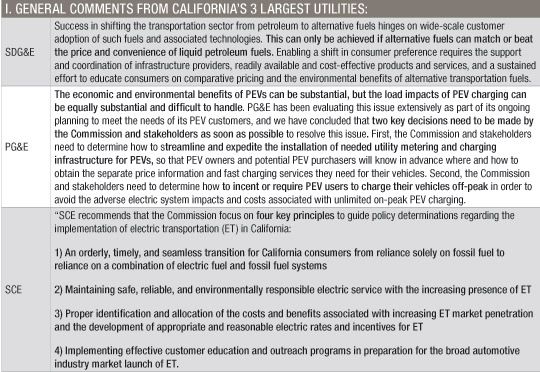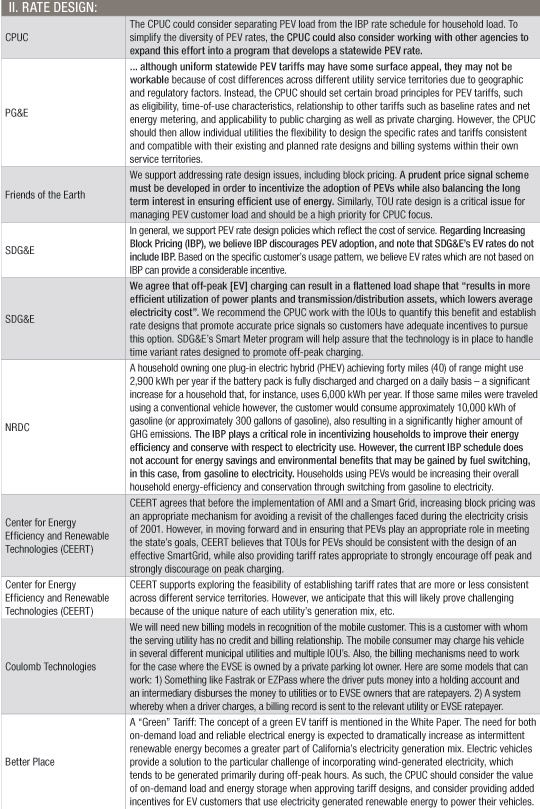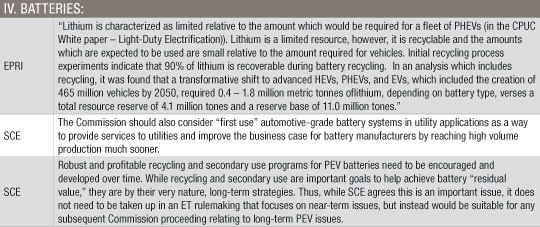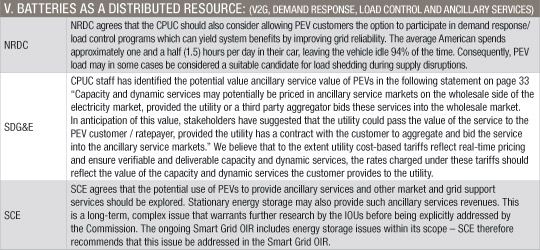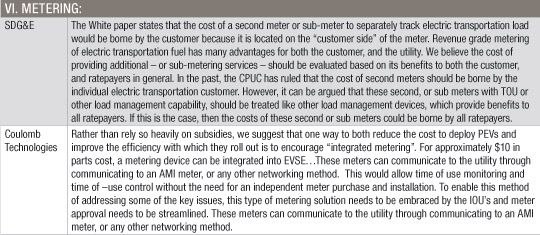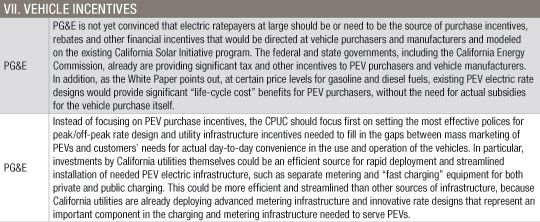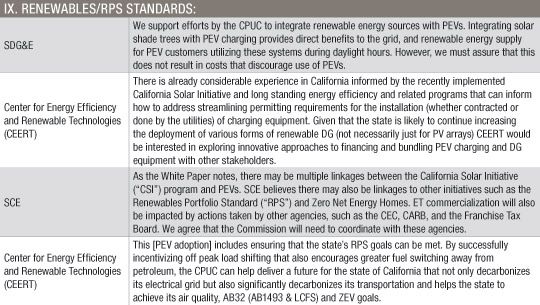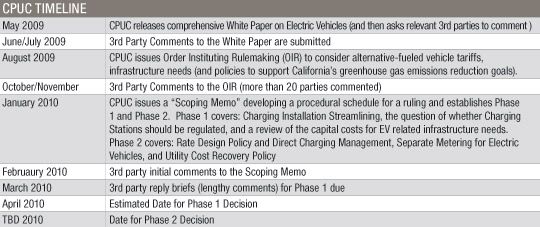1. Introduction
So it's a commercial break during the Winter Olympics, and here I am catching up on some reading. All the while, as you would expect, Coca-Cola and Visa ads are running innocently in the background. Suddenly, something catches my attention, so I look up towards the television - wait, did I see that correctly? A national ad campaign for an all-electric vehicle? What on God's green(tech) earth is going on here?
Is it just me... or in watching the Nissan LEAF's on-going advertising blitz during the 2010 Winter Games, do you also feel that we are now approaching a tipping point in public awareness for electric vehicles (EVs)? I find it to be completely surreal... and in a good way. [Clearly, Nissan, the smallest of the Japanese "Big 3," is eager to have its own Prius-style coming-out party].
The moment I first saw the 60-second spot, which introduces viewers to "the 100% electric Nissan LEAF," what I was actually reading was the transcript of PJM's Ken Huber's testimony in front of the U.S. Senate last December, which highlighted the benefits of V2G/grid storage/frequency regulation/etc. for plug-in hybrid electric vehicles -- and yet, I still found myself rather unprepared to take in this advert, and what it means in a broader sense.
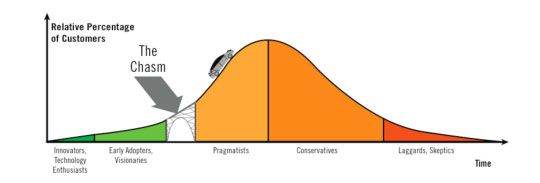
Source: EPRI & PJM
Make no mistake -- we haven't yet approached the above-depicted chasm between the "early adopters" and the "pragmatists" (indeed, we remain way over in the "innovators" portion of the graph), but it sure feels like we are picking up the speed that will be necessary to cross that bridge. For what it's worth, EVs can accelerate faster than any gasoline-propelled vehicle (just something to keep in mind). Other tipping points will surely come; the usual suspects include: $4/gallon of gasoline, the cost curve of lithium-ion batteries kicking in as more EVs are produced (and as more battery-based grid storage is implemented), a Tesla or a Fisker being featured as the ideal car in whichever movie becomes the Back to The Future of 2010, and/or the release of an LCD Soundsystem track (featuring Jay-Z) celebrating EVs -- and deftly titled, "The Gamechanger."
I'm not joking. Rock 'n' roll and the car culture grew up together. There is an endless overlap between the two: both represent freedom, adventure, joy, a better way of life, new possibilities, and so on. However, somewhere along the (SUV factory) line, the auto industry went way off course, producing vehicles that inspired nothing. I can actually pinpoint the exact moment the industry admitted this publicly: it happened when a Led Zeppelin song was paired with a Cadillac ad. Give us a break! (Our prayers of great songs not being spoiled by lame product campaigns were once again dashed.)
Having said that, doesn't it feel like electric vehicles and pop culture were absolutely made for one other? These are the thoughts that crossed my mind as I watched the new Nissan LEAF campaign unfold in between bouts of women's speed racing and men's cross-country snowboarding.
2. Behind the Scenes in California
OK, let's turn off the TV for a moment and switch gears from the mass marketing of electric vehicles and turn instead to assessing what customers', grid operators' and other relevant stakeholders' actual needs will be in terms of preparing for the scaling up of EVs, and to evaluating how well these needs are now being addressed. The best place to examine this process is in California.
The world's eighth largest economy, and a major global hub of greentech innovation and adoption, California will serve as the "test lab" for EV adoption in the United States. (The majority of the first round of Nissan LEAFs shipped to the U.S. will be delivered to California, later this year). And so, realizing the great urgency of this coming roll-out, and because they are in a unique position to provide a fair and balanced voice, the California Public Utility Commission (CPUC) has been leading efforts to bring together all the major EV players -- utilities, automakers, environmental groups, researchers, and the new charging station companies -- with the aim of facilitating a seamless a transition to electric transportation.
2.1 The EV Dialogue Begins in Earnest
To begin the "conversation," last May the CPUC issued a comprehensive white paper titled "Light-Duty Vehicle Electrification In California" in order to spot trends, issues, opportunities, and barriers. The CPUC objectives were to ensure that fair and reasonable rates for EVs would be offered, to protect the reliability of the grid, to promote innovation for EV products and services by keeping the various "playing fields" level and open, and to make sure that other critical issues also are being addressed. The CPUC is essentially leading the process of establishing "the rules of the game" for EVs, and since this has never been done before, the results will likely serve as the template for other states and countries going forward.
2.2 Agreement Among the Players
After issuing the white paper, the CPUC invited all relevant parties to comment. In reviewing these comments, I have found these documents to be inspired and insightful across the board. (In the Section 3 of this article, I have selected certain excerpts that I felt merited a review.)
In the white paper, the CPUC calls attention to the various benefits of EVs, such as the possibility of cheaper vehicle "fueling" costs, reduced air pollution, reduced CO2 emissions, load leveling, future ancillary services (i.e., V2G and frequency regulation), and decreased petroleum consumption. Perhaps it is because I Iive on the East Coast, and am constantly having to advocate and defend EVs, but to my surprise and delight, nowhere in any of the third-party comments (including from California's big three utilities, PG&E, SCE and SDG&E) are the drivers and benefits of EVs disputed. So on the one side, the major auto manufacturers are all cranking up production and attempting to bring EVs to market in the next 9-24 months, and on the other side, utilities, regulatory agencies, and other relevant groups are trying to get their ducks in a row at wartime speed. If you think about it, this is quite a moment.
While inevitably, there will be disagreements about various elements of the EV rollout, rate design being chief among them, generally speaking, it appears that most stakeholders' priorities are in order. The players have identified the same critical issues that need first attention (see list below) and everyone seems to be saying, "Let's make the mass transition towards EVs as streamlined as possible. Let's make this a success story."
Reviewing the white paper and all comments, the central issues that emerged are the following:
a) Infrastructure build-out (both at the grid- and customer-level) to maintain safe, reliable electric services
b) Setting the right price (rate design) of electricity for EVs
c) Calling attention to the load impacts of EVs (see chart below)
d) The critical need for off-peak charging
e) Offering the right products and services (including determining the best process to install 240V plugs in consumers' homes)
f) The intersection of renewable energy with vehicle charging
g) Proper consumer education

Source: PG&E (Andy Tang's Keynote Address at The Networked Grid on 11/4/09)
It's worth noting that one looming -- and possibly contentious -- issue is whether or not charging companies will be regulated as if they are utilities. Recently, Michael Peevey, the president of the CPUC, has signaled that that the CPUC may be inclined not to regulate these groups. California utilities are split on this question; PG&E, SCE and Sacramento Municipal Utility District (SMUD, being a Muni is actually not regulated by the CPUC) claim that the charging providers are utilities, while San Diego Gas & Electric has stated that they should not be regulated. Examples of charging infrastructure providers are Better Place, Coulomb Technologies, and AeroVironment. If this opinion stands, the CPUC would have no authority to set the prices that charging facility stations can charge.
2.3 An unfolding process
In August 2009, the CPUC furthered the process by issuing an Order Instituted Rulemaking (OIR) with the goal "to review any current electric vehicle tariff schedules and facilitate electric vehicle charging infrastructure in the near-term to support a successful transition of a portion of the gasoline-powered vehicle fleet in California to electric vehicles. We intend to develop consistent statewide policies and standards to guide and encourage development of electric vehicle metering, home electric vehicle charging infrastructure, commercial and public charging infrastructure, tariff schedules, and, if advisable, incentive programs." The back-and-forth with stakeholders continued as the CPUC then received comments from over 20 parties.
A "Scoping Memo" then followed in January 2010 and identified the most pressing issues needing immediate attention. The memo put together a final schedule for resolution, dividing the most critical issues (many corresponding to the ones that I highlighted above) into two phases. Next month (March 2010) is the deadline for third parties to submit comments for Phase 1, which covers: the streamlining of home (240V) plug installations, the already-mentioned issue of whether or not charging stations will be regulated, as well as a request for utilities to shed light on what the capital costs associated EV build-out are likely to be (and how might those expenses be recovered from ratepayers). A decision from the Commission regarding Phase 1 is expected in April. Meanwhile, Phase 2 will cover critical issues of metering, rate design, off-peak charging, and utility cost recovery. No timeline has yet been given for a Phase 2 decision.
So basically, the CPUC will start drawing lines in the sand in April. However, Phase 1 is sort of a "warm-up" round, with only one difficult decision - whether or not charging stations should be regulated as utilities -- to be made. Phase 2 is really where the rubber will meet the road; this is when all of the tough decisions will need to be made. Should there be a statewide EV rate? How can EV prices be made simple and clear for all customers? Should EV load be separate from the household load (and the block/tiered pricing schemes in place)? Will a separate meter be required? Can a foundation for the vehicle-to-grid concept be put in place right from the beginning? These are just a few of the dozens of difficult choices that will need to be made before the mass roll-out begins.
2.4 Smart Grid and Electric Vehicles: Is the tail wagging the dog?
The smart grid is not the easiest concept to get across, but its features are relatively simple to explain. 2010 will see a near-doubling of PV solar in the U.S. (GTM Research is expecting the market to grow from 440 MW in 2009 to around 830 MW this year), the beginnings of the smart home (home-area network device standards are expected to be announced in October), and the birth of the electric vehicle industry. While these are just a few examples of the possible applications of a smart grid, the point is that none of these technologies can be scaled without a smart gird in place.
What's interesting about the relationship of EVs to smart grid is that it's a bit like the tail wagging the dog. There is the general thought that if we can add more intelligence to our grids, then we can begin to offer all of these valuable applications. But EVs may be proving that this kind of thinking is backwards. The roll-out of EVs may force utilities to play "defense" with their grids, much more so than playing "offense." Indeed, this may prove to be one of the most valuable lessons to come out of California in the next 18-36 months.
What I find compelling is that even though EVs are often represented as a future 'killer app' of smart grid, due to the broad-reaching and irreversible implications of their introduction (take a second look at the above chart from PG&E), electric utilities will soon need to "double down" on smart grid technologies, which they are only still in the first phase of deploying. This is especially the case at the meter level, as there is a good chance a second smart meter (or a smart submeter) will be needed for EVs.
Actually, the question of how best to meter these vehicles remains open for discussion. According to the CPUC's Scoping Memo, "Metering could occur through the main meter in the residence, an on-car arrangement, through a separate [second] revenue-grade meter serving a dedicated electric vehicle load or through a sub-meter."
What we now (hopefully, all) realize is that these vehicles will need to be networked (i.e., they will need to have the capability to engage in real-time communications with the grid, at the very least when they are plugged in), and that some form of dynamic or tiered pricing will need to be in place, such that consumers receive a strong price signal to charge in a manner that is not detrimental to our grids (i.e., there must be a strong financial disincentive for charging during peak hours, while conversely, an attractive rate should be offered off-peak).
These are actually two core tenants of smart grid (my version, at least): 1) ubiquitous communication on all energy-hungry appliances and 2) pricing models that reflect the true cost (and the fluctuating wholesale price) of electricity.
In my experience, much of the smart grid discussion at the consumer level has revolved around networking the thermostat/HVAC and the clothes dryer (which, granted, are important). However, if you take a third look at the PG&E chart above -- where it is shown that the load from fast-charging a car on a 240V/30A connection is comparable to a summer peak load for an entire residence in many California cities -- it should be apparent that this is the mother lode. Even with all of the existing drivers that are moving smart grids forward, before electric vehicles, there was/is this lingering attitude "dynamic pricing, yeah that's a nice idea, but..." It is my feeling that EVs will take that "but" away and make dynamic pricing an imperative.
The upgrade to the 240V/30A connection that is needed for "fast charging" is going to cost roughly $1500-$2000 per home, but guess what? Anyone that buys an electric vehicle is going to want one of these outlets. We live in the age of broadband, and nobody is going to accept the charger equivalent of a dial-up connection for their car. We have to expect that these loads increasingly will be part of the overall equation; it is only through smart grid technologies and systems that we will have a chance to flatten the overall load curve (in attempting to keep electricity affordable and meeting our other societal commitments) in the face of skyrocketing EV charging loads.
Further -- and this is especially important in the early days of EV adoption -- utilities will need to have real-time insight into what is happening on their distribution grids (down to the transformer level). It is only by having some kind of Distribution Management System (DMS) in place that grid operators will be able to spot, or to know in advance, if a circuit is overloaded or experiencing any difficulties that could lead to wider disturbances. Basically, you could try to oversee a mass rollout of EVs without smart grid, but you would be inviting serious trouble.
Lastly, if you think about the intersection of EVs and smarter grids from the carbon perspective, as it currently stands, roughly 40% of CO2 emissions in the U.S. come from the electricity needs of residential, industrial and commercial buildings, while 30% come from transportation. That means a whopping 70% of this nation's carbon emissions (after you subtract air travel and a few other relatively nominal segments that will likely stay fossil-based for the mid-term) can be approached, and I dare say reduced, through smarter grids and electric transportation.
So electric vehicles and networked grids will go hand in hand. California is where this will begin. And we now wait with bated breath as the CPUC begins to announce the "rules of the game" for electric transportation. 2010 certainly is shaping up to be an exciting year....
3. Excerpts from the Third-Party Comments to the CPUC's White Paper, "Light-Duty Vehicle Electrification in California"
We encourage readers who have an interest in EVs to read both the CPUC white paper (which is excellent) and the comments provided by third parties. (We will be following up with more specific analysis on the third-party comments, especially the comments to Phase 1 of the Scoping Memo, as they come in next month). The following comments are shared to give insight into various issues and the ways in which different groups are approaching them. Enjoy!
Note: in the white paper and comments, the term PEV, is meant to cover both PHEVs (plug-in hybrids) and all-electric vehicles. Above, we've been using "EV" to express the same classes of vehicles, broadly covering any "light-duty" vehicle that plugs in.
